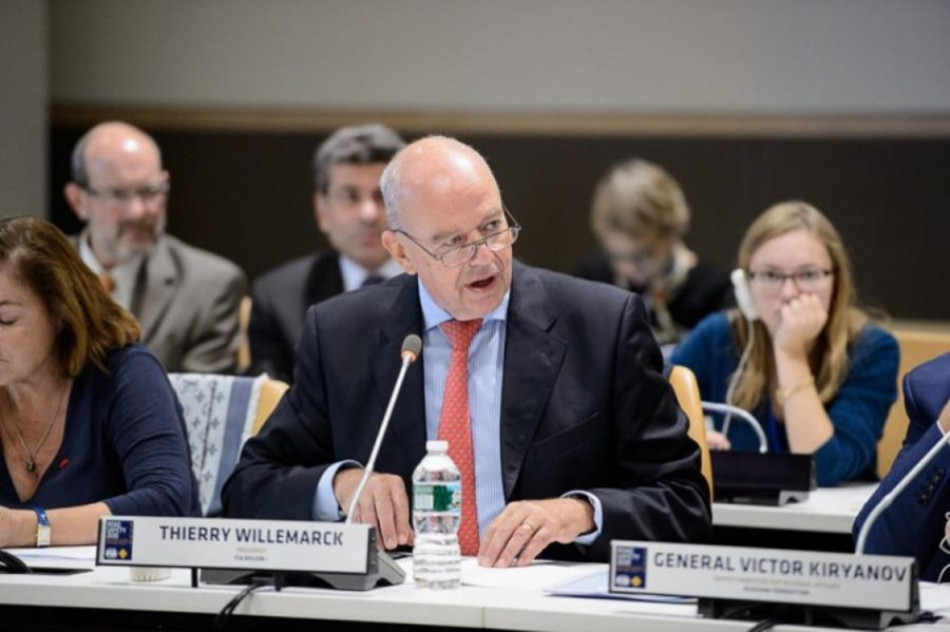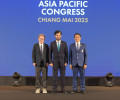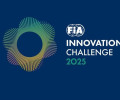The FIA’s Formula for Sustainable Mobility: An Interview with Thierry Willemarck, Deputy President Mobility
An interview with Thierry Willemarck, FIA Deputy President for Mobility published on The Urban Mobility daily.

As the old idea of automobiles is often perceived as counter-intuitive to decarbonisation and sustainability goals, what is FIA doing to include them in the necessary clean energy transition?
The FIA is convinced that the role of consumers is key in the transition towards more sustainable mobility solutions. In the context of increased attention to urban issues of air quality and congestion, it is essential that we keep sight of the needs of all road users, safeguarding the coordination of consistency in policies at the national and local level.
Wherever possible, we should be seeking to facilitate decisions, ensuring consumers have clear and reliable information about the environment impact of their choices. This is why the FIA and its network of 145 Clubs around the world are promoting initiatives to help decision makers to design inclusive and fair policies in order to enable consumers to make better informed decisions about their mobility choices and their consequential environmental impacts.
As one of your main initiatives is road safety, how do you envision a safer future, given the rise of so many new modalities of transportation (traditional cars, buses, scooters, bikes, AVs, kick scooters, etc.) on the road?
New forms of mobility are arising, bringing new opportunities, but also new challenges in terms of safety, particularly at urban level. We need to encourage city authorities to embrace the ‘Vision Zero’ approach, to prevent all traffic fatalities and severe injuries. The Vision Zero is a continuous and demanding process, however, it has proved to be efficient and practically applicable in cities of all dimensions and geographic regions.
A perfect example of the successful implementation of the Vision Zero strategy is the city of New York, which has become the first American city to adopt this strategy in 2014. Since then, the city’s traffic fatalities have declined 28 percent, with a 45 percent decline in pedestrian fatalities. This shows that road safety in an urban environment can be reduced, even in a complex city, with the right set of policy measures.
Finally, road safety measures should be innovative. Without new technologies set to advance the global road safety performance, the “no fatalities target” will be hard to achieve. New driver assistance solutions, automated features, sensors and other connectivity elements should be first rigorously tested and then introduced to the consumer market. Reliable technologies are a strong tool for making our roads and vehicles safer and more inclusive.
Why is it important for FIA to partner with Autonomy this year?
Autonomy is a relevant platform to showcase how mobility patterns and needs are evolving. For the FIA, it is important to be part of this process, helping to accelerate the uptake of smart and sustainable urban mobility solutions, but also bringing our critical view on those solutions that do not convince us or just do not look safe enough.
You recently launched the FIA smart cities initiative in 2017. Can you briefly describe the program, and outline what were its main successes and challenges after its first year?
Cities around the world are currently rethinking their urban policies, with a focus on sustainability and mobility playing a central role in this process.
The FIA Smart Cities Initiative is built around the ABB FIA Formula E Championship, to showcase how technology and innovation pioneered in motor sport can effectively improve mobility in our cities. Gathering Mobility experts, city authorities, international transport organisations, service providers, global urban innovators and R&D, this initiative aims to help cities define new models for sustainable and safe urban mobility. Forums already took place in Mexico City, Berlin, Montreal, Paris, Santiago, Rome, and Zurich, with a plan to reach Asia in 2019.
The programme also includes a Smart Cities Startup Challenge, to identify, select, and support new ideas and solutions that can improve the quality of mobility, some of which will be presented at Autonomy, and a Smart Cities Award, to demonstrate that cities can actually design innovative policies or implement innovative services for mobility without necessarily penalizing road users.
In the third season of our programme, we will continue strengthening our cooperation with relevant stakeholders in the field of mobility, such as Autonomy, in order to ensure a long-lasting legacy in the cities hosting the Formula E races.
What do you see as the greatest urban mobility issues and how is the FIA working to solve them?
Safety remains our main concern and the FIA will continue working with city authorities and all stakeholders to raise awareness on the importance of ensuring safer streets for our communities, and to design programmes to reduce fatalities among vulnerable road users. The #3500lives global road safety campaign, deployed in 900 cities; the Safe City Street initiative in cooperation with the International Transport Forum; the Start rating for School program, in cooperation with the International Road Assessment Programme; the many projects implemented in cities through our member Clubs, through the FIA Road Safety Grant Programme. This is just some of our work at the city level on the side of safety.
Our goal more broadly is to ensure access to safe, sustainable and affordable mobility solutions. In this perspective, air quality and traffic management are priorities for the FIA and its Member Clubs, and we are committed to unlocking solutions of both a technical and political nature to improve urban mobility systems. One of the concrete initiatives in this area is our Vehicle Environmental Performance Testing program – an independent consumer testing program using robust methodologies for measuring vehicle exhaust. Real-life vehicle performance results help to better equip FIA Clubs and partner organisations to encourage manufactures to improve vehicle environmental performance and to guide consumers to identify the “greenest” choice for their needs.
Can you explain the universal design principles in regard to mobility and why they are important for a sustainable future?
Universal Design is a progressive step forward in making mobility systems more inclusive. The benefits of transport systems designed in an inclusive way go far beyond simply meeting laws and regulations, as improved access to transport integrates all users in the mobility ecosystem in a fair and convenient way.
We often associate “accessible transport” with accessible vehicles, designed to accommodate the needs of disabled and elderly people. However, vehicles enhanced with the Universal Design solutions should not be advertised specifically for the disabled. They should be positioned as cars with improvements for everyone.
At the same time, Universal Design should be better integrated in the urban context, in bus transit and rail systems, sidewalks, crossings, and tourist attractions.
Original article: https://urbanmobilitydaily.com/the-fias-formula-for-sustainable-mobility...
Interview conducted by Anne Gadel, Head of Public Affairs, Autonomy

 Facebook
Facebook Twitter
Twitter






